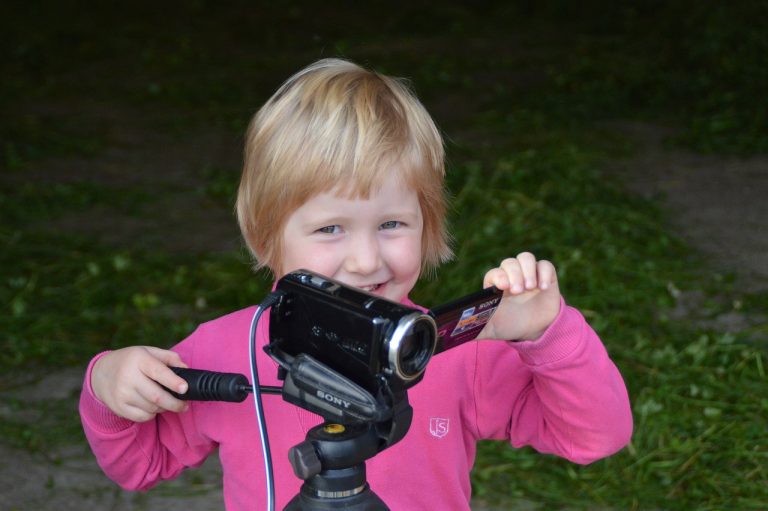With the rise of social media platforms like TikTok, Instagram, and YouTube, video content is not just consumed—it’s expected by audiences. It has become one of the most effective ways to reach potential customers. Statistics show that 82% of consumers have been convinced to buy a product or service after watching a video . But why is video so powerful, and how can businesses leverage video marketing to boost visibility, engagement, and sales?
Why Video Marketing?
As more people spend time on mobile devices and social media, the way we consume content has dramatically changed. Video has become the preferred format for many, especially among younger generations. Videos offer a visual and auditory experience that easily captures attention and conveys complex messages quickly. This makes it easier for businesses to build brand awareness and convince potential customers of a product’s value in an engaging way.

Benefits of Video Marketing
- Increased Engagement: Videos generate significantly more engagement than text or image posts on social media. According to reports, posts with videos receive up to 120% more shares on social media.
- Higher Conversion Rates: When customers watch a video explaining a product, the likelihood of them completing a purchase increases. Videos provide a visual demonstration of the product’s use, giving customers confidence in their purchasing decisions.
- Enhanced Brand Awareness: Videos allow businesses to showcase their personality and values in a way that builds trust with customers. Through storytelling, companies can create emotional connections with their audience.
How to Create Effective Videos
- Tell a Story: A good video does more than explain a product—it tells a story that resonates with viewers. A strong narrative can create an emotional connection and make potential customers feel linked to the brand.
- Know Your Audience: It’s crucial to tailor content to your target audience. Young users on TikTok prefer short, dynamic videos, while an older audience on YouTube may be more interested in deeper, informative content.
- Keep It Short and Concise: Too much information can deter viewers. Social media videos should be short and direct, always with a clear call to action.
Types of Videos in Marketing
- Product Videos: These videos showcase the product in use, giving customers a clear understanding of its features and benefits. Product videos can be used on websites and social media to convert curious visitors into paying customers.
- Instructional Videos: How-to videos are highly popular and can help position the business as an expert in its field. They provide value to viewers by teaching them something new while demonstrating how the product can be used in everyday life.
- Testimonial Videos: Customer feedback videos build trust and credibility. When potential customers see others who have had positive experiences, they are more inclined to try the product themselves.
Optimization for Different Platforms
Facebook and Instagram:
- Length: 15–60 seconds.
- Short, catchy videos work best on both platforms. Since many watch videos without sound, it’s important to use subtitles to convey the message effectively. Start the video with something that quickly grabs attention, as viewers often decide within a few seconds whether to continue watching.
YouTube:
- Length: 2–10 minutes.
- Longer, more informative videos work best on YouTube. Optimize videos with SEO strategies by including relevant keywords in the title, description, and tags. Create content that provides value, whether it’s tutorials, entertainment, or product demonstrations.
TikTok:
- Length: 15–60 seconds.
- Creative, short videos with humor, originality, or a unique twist are most effective. TikTok primarily appeals to a younger audience, so videos with a light, engaging tone work best. Use trends, music, and quick cuts to attract attention.
Tools for Video Production
You don’t need expensive equipment to create effective videos. There are many user-friendly tools available that can help you produce professional content, even on a small budget:
- DaVinci Resolve: A powerful, free video editing tool offering professional editing capabilities, including color correction, visual effects, and audio adjustments.
- HitFilm Express: A free video editing software with advanced editing features and special effects. Great for content creators looking to add extra flair to their videos.
- Animoto: An online tool that allows you to create professional videos with ready-made templates. Easy to use and perfect for quick yet effective videos.
- Veed.io: A user-friendly online platform for video editing, subtitling, and editing videos. It works directly from the browser without the need for downloads.
- Lumen5: An AI-powered tool that transforms blog articles or text content into videos by combining text, images, and video.
- Filmora: An affordable option with many features for video editing, including filters, transitions, and special effects, perfect for beginners and professionals.
- Adobe Premiere Pro: An advanced editing tool for professional videos.
- Canva: A simple platform for creating short videos with text and images.
- Smartphones: With today’s technology, most smartphones can record high-quality video. Combine this with editing apps like iMovie or InShot to create great videos without professional equipment.
Examples of Success Stories
A Norwegian example of success with video marketing is Kolonial.no (now Oda). They used videos to show how easy it is to order groceries online. Norwegian Air Shuttle has used video to highlight their destinations and customer experiences, increasing both brand awareness and sales. DNB has also used video marketing effectively with campaigns like “It’s Your Turn,” where they highlight life-changing moments for customers.
The Future of Video Marketing
Video marketing will only grow in importance in the future. With the emergence of new technologies like AR (augmented reality) and VR (virtual reality), video experiences will become even more immersive and interactive. Live streaming and personalized video messages may also become important tools for building stronger bonds between the brand and the audience.
Summary
Video marketing has become an essential part of any digital strategy. From creating engagement and building brand awareness to increasing conversions, there’s no doubt that video is one of the most effective ways to reach customers. The numbers speak for themselves: businesses that use video often see better SEO results, increased time spent on websites, and higher sales volumes.
However, while I highlight the many benefits of video, I write this article with a slight pang of guilt. To be honest, I haven’t yet adopted video marketing myself. My credibility might be questioned, but this is a conscious choice. I have strategic reasons to wait, but with my plan for 2025, I’m excited to explore this technique more actively to bring the website out of the “shadow valley.”
So, while statistics show that using video is the way to go, I hope that, for now, through text, I can inspire you to find your own path into this universe—and perhaps learn from my experiences along the way. Stay tuned, as my first steps into video marketing will soon become part of this story.




